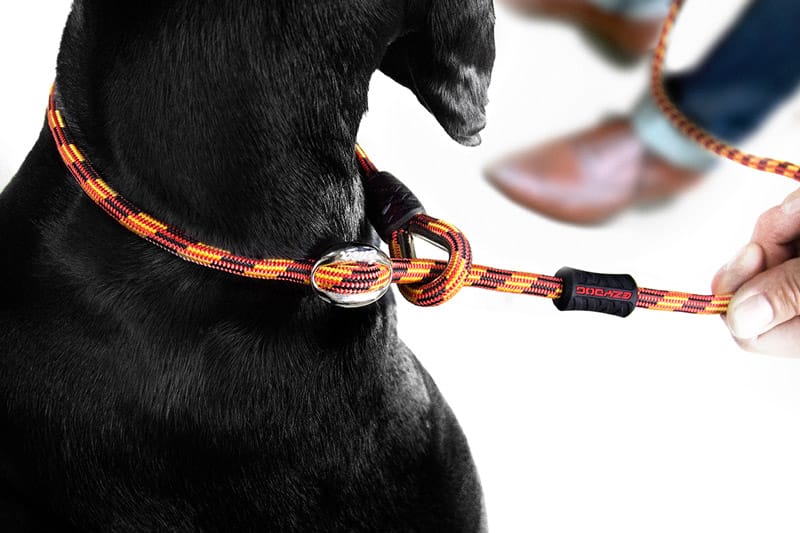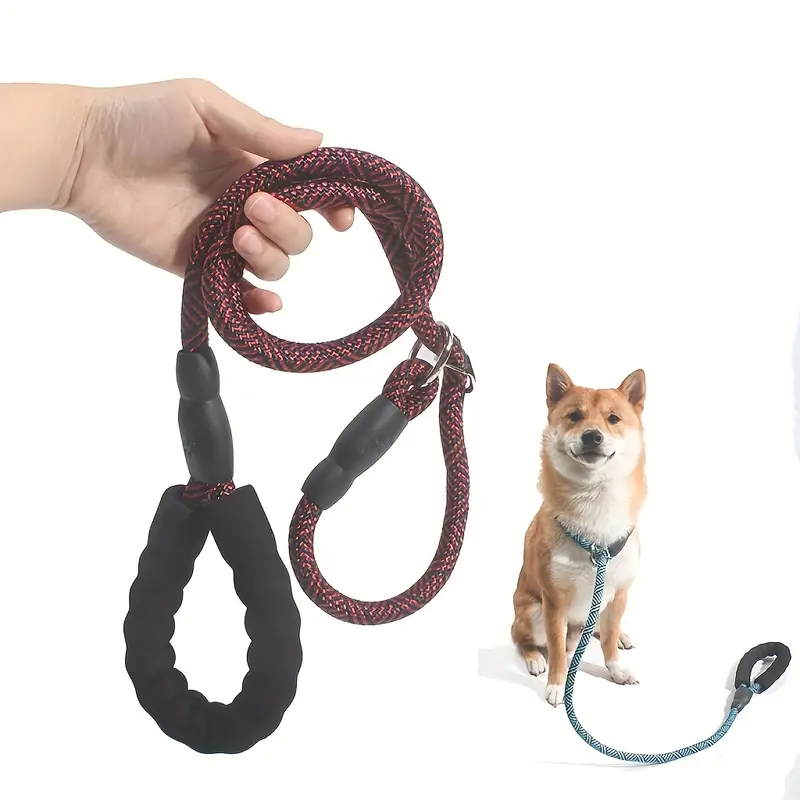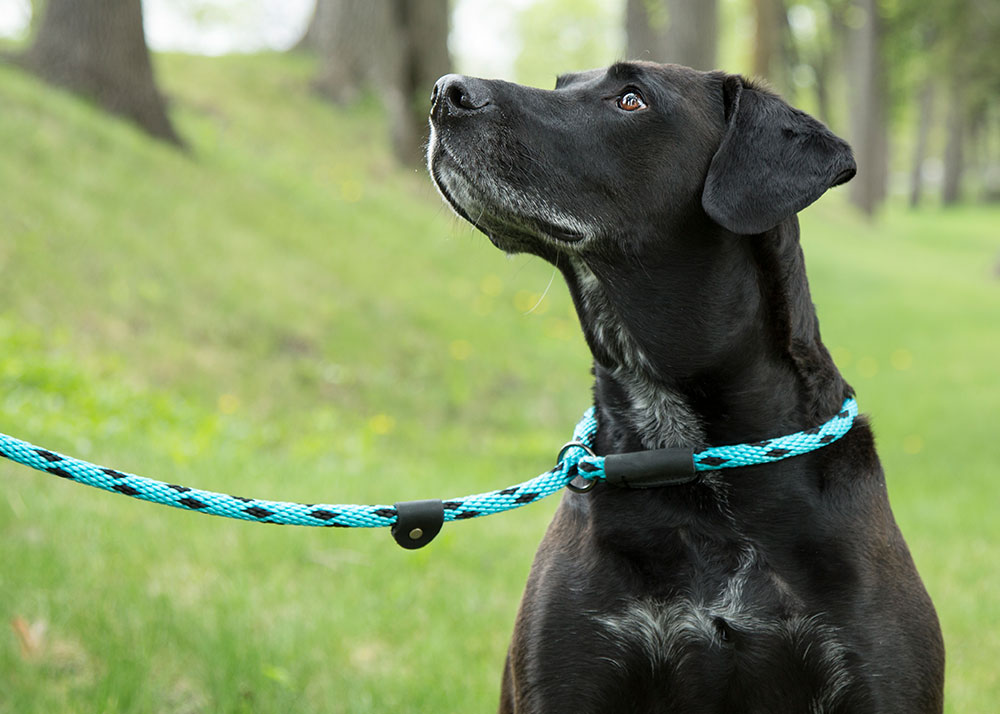Understanding the Dog Slip Training Collar: An In-Depth Guide 2024
Introduction
Training dogs efficaciously is an essential responsibility for pet owners, the Dog Slip Training Collar making sure that their bushy companions are well-behaved, safe, and satisfied. Among the severe tools available for canine education, the dog slip training collar sticks out for its simplicity and efficacy. Despite its arguable nature, whilst used correctly, this collar can be a treasured asset in a dog’s schooling routine. This article delves into the intricacies of the dog slip education collar, exploring its design, benefits, proper usage, potential dangers, and fine practices.
What is a Dog Slip Training Collar?
A canine slip schooling collar, often noted virtually as a slip collar, is a looped leash that tightens when tension is applied and loosens when the anxiety is launched. This design makes it an effective tool for training, as it offers instantaneous comments to the canine. The collar typically consists of a length of material, inclusive of nylon or chain, forming a loop with a hoop at each stop. When the leash is threaded through one of the rings, it creates a slip loop.
Benefits of Using a Slip Training Collar
Immediate Feedback: The number one benefit of the Dog Slip Training Collar is its capacity to provide instantaneous comments. When a canine pulls or misbehaves, the collar tightens, signaling that the conduct is unwanted. Conversely, the collar loosens when the dog complies, reinforcing fantastic behavior.
Simplicity and Control: Slip collars are straightforward in design and smooth to apply. They provide the handler more advantageous control over the dog, making them mainly beneficial for massive or strong breeds that can be hard to manipulate with an ordinary collar.
Training Efficiency: With consistent and correct use, slip collars can expedite the schooling technique. They are in particular powerful for correcting behaviors inclusive of pulling at the leash, lunging, or other styles of disobedience.
Versatility: Slip collars may be used for a variety of training purposes, from basic obedience to more superior behavioral correction. This versatility makes them a famous desire among professional trainers and skilled dog proprietors.
Proper Usage of the Dog Slip Training Collar
While the benefits are clear, the effectiveness of the Dog Slip Training Collar largely relies upon on proper usage. Incorrect use can result in bodily harm and exacerbate behavioral troubles.
Here are key suggestions to follow:
- Correct Placement: The slip collar has to be placed excessive on the dog’s neck, just behind the ears. This placement allows for better manipulate and decreases the threat of damage. Ensure that the collar paperwork a ‘P’ shape whilst viewed from the front – this ensures it releases easily while the tension is launched.
- Timing and Consistency: Effective education with a slip collar calls for impeccable timing. The correction (tightening of the collar) must be immediate and brief, accompanied by way of a release as quickly because the desired behavior is observed. Consistency is crucial to help the canine recognize the connection between its behavior and the correction.
- Gentle Corrections: It’s crucial to use gentle corrections to keep away from causing physical damage. The intention isn’t always to punish but to guide the canine toward suited behavior. Overly harsh corrections can cause fear, tension, and aggression.
- Positive Reinforcement: Complement the use of the slip collar with fantastic reinforcement. Reward the canine with treats, praise, or play when it famous the desired behavior. This balanced method allows build a fine association with schooling.
- Supervised Use: Never depart a dog unattended with a slip collar on. The collar’s layout poses a chance of strangulation if it receives caught on something or if the canine struggles excessively.

Potential Risks and Controversies
Despite its effectiveness, the slip schooling collar isn’t without controversy and potential risks. Critics argue that the collar can be harmful if misused, main to physical accidents together with tracheal harm, neck injuries, and psychological issues like worry and anxiety. Here’s a closer look at these concerns:
- Physical Harm: If the collar is used too harshly or positioned incorrectly, it can reason bodily injuries. Dogs with existing fitness issues or small breeds with delicate necks are especially inclined.
- Psychological Impact: Negative reinforcement, if not balanced with high quality reinforcement, can cause fear and anxiety. Dogs may additionally come to be fearful of their proprietors or the education process itself, that can avert development and harm the human-animal bond.
Misuse by way of Inexperienced Handlers: Inexperienced canine proprietors may additionally misuse the slip collar, main to accidental consequences. It’s important that handlers teach themselves on the ideal utilization and seek steering from expert running shoes if essential.
Best Practices for Safe and Effective Use
To mitigate the risks and maximize the blessings of the Dog Slip Training Collar do not forget the following high-quality practices:
- Seek Professional Guidance: If you’re new to the use of a slip collar, are searching for advice from a expert canine trainer. They can show right strategies and help you increase a schooling plan tailored in your dog’s wishes.
- Regular Monitoring: Regularly test your canine’s neck for signs and symptoms of infection or injury. If you notice any problems, stop use straight away and seek advice from a veterinarian.
- Choose the Right Collar: Ensure the collar is crafted from notable materials and is correctly sized in your dog. Avoid using overly heavy chains or collars with sharp edges.
- Combine with Other Training Methods: Use the slip collar as a part of a broader training method that includes advantageous reinforcement, clicker education, and different humane techniques. This holistic approach is more likely to yield lengthy-term achievement.
Understand Your Dog’s Signals: Pay interest in your canine’s frame language and signals. If your canine indicates symptoms of misery, anxiety, or aggression, re-examine your schooling strategies and seek advice from an expert if important.

Alternatives to Slip Training Collars
For folks that are uncomfortable with the concept of using the Dog Slip Training Collar, several alternatives are to be had. These include:
Martingale Collars: These collars offer more control than regular collars but are less harsh than slip collars. They tighten most effective to a sure quantity, lowering the chance of harm.
Head Halters: Head halters, which includes the Gentle Leader, provide control by guiding the canine’s head, making it tough for the dog to pull.
Harnesses: Front-clip harnesses can assist manipulate pulling without placing stress on the neck. They are especially beneficial for puppies susceptible to breathing problems.
Positive Reinforcement Training: Focus on fantastic reinforcement strategies that praise favored behaviors. This technique can be effective for many dogs and fosters a fine courting among the canine and handler.
FAQs
- Is a slip education collar suitable for all dogs?
Slip training collars are not suitable for extremely small puppies, dogs, or dogs with breathing problems. Consult with a veterinarian or professional teacher to decide if it’s appropriate in your canine.
- Can I go away a slip training collar on my dog all the time?
No, slip education collars ought to most effective be used throughout training sessions and walks. Leaving it on all of the time can purpose damage and discomfort.
- How do I introduce my dog to a slip schooling collar?
Introduce the collar steadily, allowing your canine to smell and come to be acquainted with it. Use treats and superb reinforcement to create a effective affiliation with the collar.
- What have to I do if my dog resists the slip collar?
If your dog resists, stop and allow them to relax. Reintroduce the collar slowly, making sure it isn’t always too tight and rewarding them for staying calm.
- How frequently need to I use the slip training collar?
Use the slip training collar during walks and precise education sessions. Consistency is fundamental, however avoid overuse to prevent negative associations.
- Are there options to slide training collars?
Yes, there are alternatives which includes harnesses and head collars. These can be greater appropriate for dogs with specific fitness problems or those who do now not respond nicely to slide collars.
- Can slip collars cause damage to my dog?
When used efficaciously, slip collars are safe. However, wrong use, together with excessive tightening or improper placement, can reason damage. Always use underneath the guidance of a professional if uncertain.
Conclusion: Making the Most of Your Training Collar
Using a canine slip education collar efficiently requires knowledge its motive, the Dog Slip Training Collar selecting the right type, and applying proper schooling strategies. When used efficiently, it could be a particularly effective device for improving your dog’s conduct and making sure more secure, extra fun walks. Remember to combine its use with nice reinforcement to construct a trusting and responsive relationship together with your dog.







